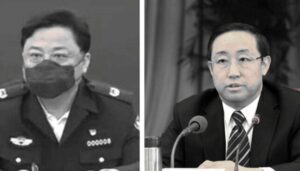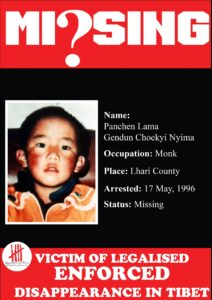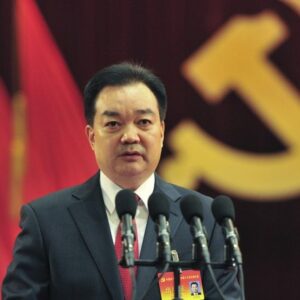The recent visuals from the official news of the so-called “Tibetan Autonomous Region” (TAR) show that the order of the Tibetan is positioned below Chinese, indicating a clear downgrading of the use and value of the Tibetan language.
During the 1980s, there was an official regulation to study Tibetan language, use, and its further development in TAR. This regulation was imposed in the schools, offices, provinces, and towns. It was mandated that any violations of the regulations will be taken action. But, from the beginning of the 1990s, and the teaching of mathematics, physics, chemistry, etc through Tibetan medium came to an end. Moreover, the official letters which were previously bilingual also stopped.
According to the original regulation, Tibetan should be written on the signboards, posters, and banners of public gatherings such as meetings, debates, and concerts, the position and order of the texts should be – Tibetan on the top and Chinese below. It has also clearly mentioned that when the texts are aligned vertically, the Tibetan should be on the right and Chinese on the left. This was followed until last year when the analysis of the reports coming out clearly indicated a change in the position of the Tibetan. This change was uniformly visible at the Tibetan Autonomous Region People’s Congress, Tibetan People’s Political Consultative Conference, and regional, towns, and provincial levels official events; Not only the position of the Tibetan was lowered, but the size of the Tibetan text was also made comparatively smaller.
Additionally, during this year’s annual Losar (Tibetan New Year) concert of the Tibetan Autonomous Region, Lhasa, Shigatse, Lhoka, Kongpo, Ngari, and even the concerts nights of small townships, the position of Tibetan is uniformly put below the Chinese on the posters and banners. Tibetan is written on the left and Chinese on the right when the banners are aligned vertically. These changes are also seen at the provincial level of the People’s Congress and the People’s Political Consultative Conference. This change could be a decision taken during the 7th Tibet Work Forum convened last year.
China’s internal struggle and current overall social stability can be deduced from Premier Li Keqiang’s delivery of the annual report at the National People’s Congress. He emphasized the word “Democracy” only 3 times and “stability” 43 times. Comparatively, former Premier Wen Jiabao has mentioned “Democracy” 16 times while delivering the annual report at the National People’s Congress in 2007.
The short report on Xi Jinping’s speech at the opening of the Central Party Cadre training course was published by the official news portals of China. The short one–page speech has emphasized the word “struggle” 14 times and “Communist party” 59 times.
Translated from Tibetan




